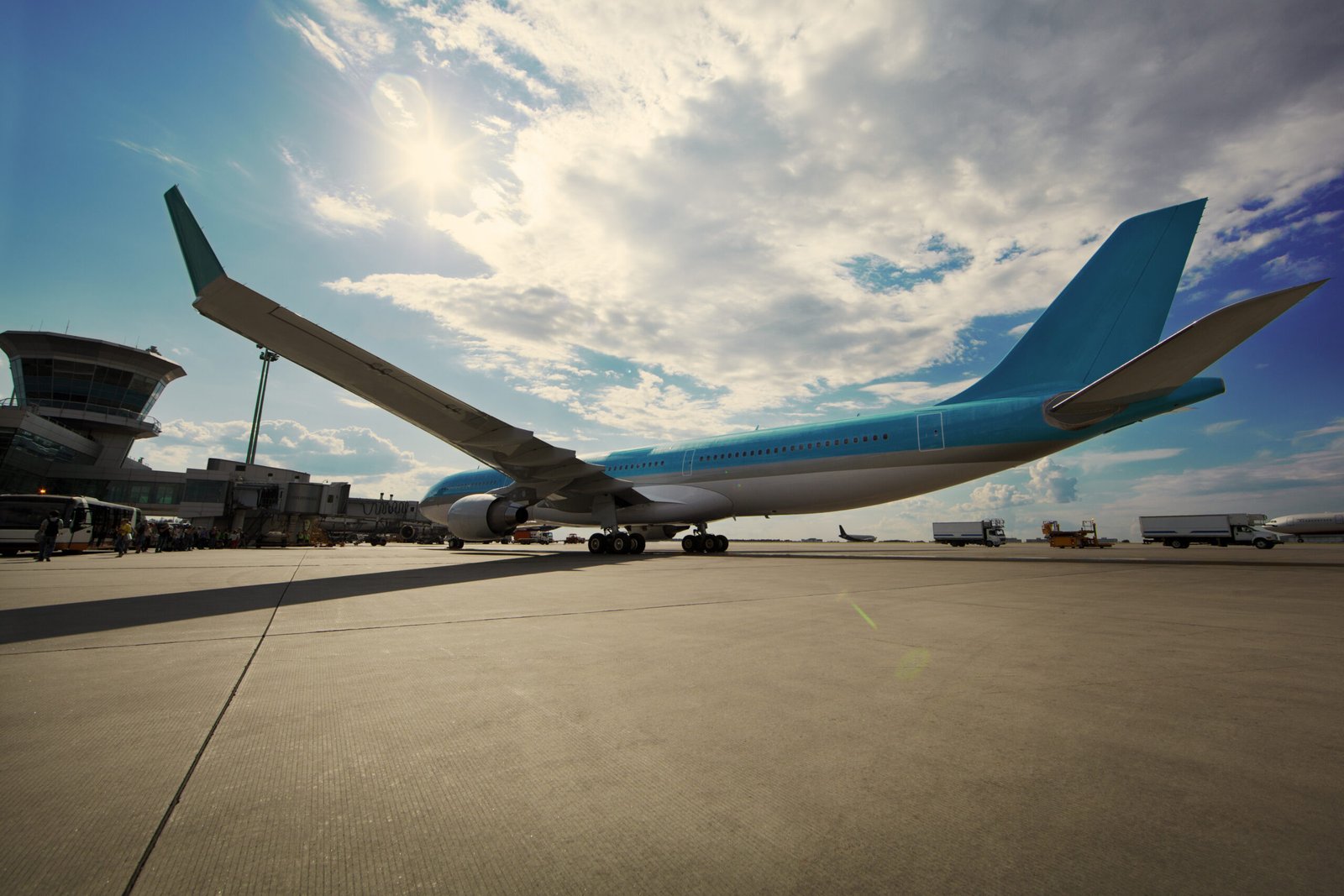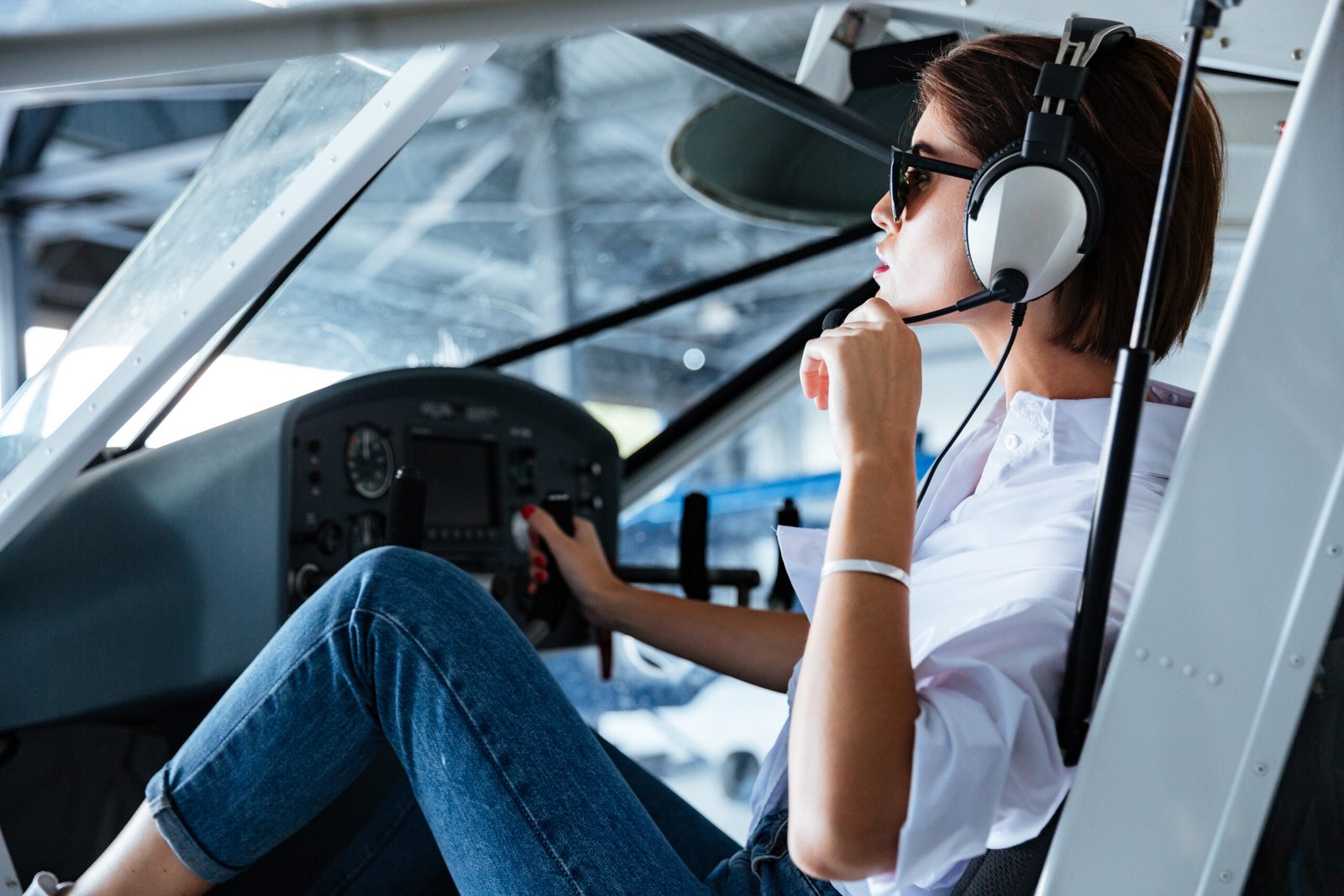Aviation
From Runways to Skies: The Evolution of Air Travel
The world of aviation has evolved at an incredible pace, transforming from the dream of flight into a thriving global industry. With this growth comes the need for skilled professionals who understand every nuance of air travel. Whether you’re aspiring to become a pilot, aircraft technician, or air traffic controller, aviation schools offer a variety of courses tailored to meet these demands.
Aviation schools can be categorized based on the types of courses they provide. Firstly, there are **pilot training programs**, which encompass everything from private pilot licenses (PPL) to commercial pilot licenses (CPL) and even airline transport pilot licenses (ATPL). These courses typically combine ground school instruction with practical flight training using both real aircraft and simulators.
Next up are **aircraft maintenance programs**, where students learn about the technical side of flying. Here, aspiring mechanics dive into subjects such as airframe systems, powerplants, and avionics. These programs prepare graduates for critical roles in ensuring aircraft safety and reliability.
Another vital area is **air traffic control training**. This course emphasizes navigation procedures and communication protocols essential for managing the busy skies above us. The curriculum focuses on developing quick decision-making skills and understanding complex air traffic scenarios.
Lastly, there are specialized courses in fields like **aeronautical engineering** and **aviation management**, which cater to those interested in designing aircraft or managing aviation operations respectively. This diversity in educational paths equips students with the necessary skills to succeed in various facets of the aviation industry.
As one embarks on their journey through aviation education, staying informed about trends and developments is crucial. Luckily, numerous blogs and websites offer rich content dedicated to air travel enthusiasts and professionals alike. Some noteworthy mentions include:
1. **AirlineReporter.com** – A blog that explores current happenings in the airline industry while providing insights into new technologies.
2. **FlyingMagazine.com** – A staple for pilots offering articles on flying techniques, gear reviews, and personal stories from aviators.
3. **Plane & Pilot Magazine** – Covering everything from flying tips to product reviews; it’s an informative resource for pilots at any level.
4. **The Points Guy (TPG)** – While primarily focused on travel points maximization, TPG often covers aviation news relevant to frequent flyers.
5. **FlightAware Blog** – This platform offers a deep dive into real-time flight tracking data along with analysis on trends impacting airlines.
In addition to blogs, social media platforms serve as excellent resources for networking within the aviation community. Twitter accounts such as @AviationWeek keep followers updated on industry news while Instagram profiles like @pilotlife showcase breathtaking aerial views that inspire many aspiring pilots.

For those looking specifically at FAA-approved flight schools or simulators, there’s no shortage of options across the United States that adhere strictly to federal guidelines ensuring quality training experiences. Notable names include:
**Embry-Riddle Aeronautical University** – Renowned for its comprehensive curriculum spanning all aspects of aviation.
**ATP Flight School** – Focused primarily on accelerated pilot training designed for those eager to enter commercial flying swiftly.
**CAE Global Academy** – Offers high-fidelity simulator training alongside actual flight time experiences.
Simulators have revolutionized pilot training by providing realistic scenarios that enhance learning without risk factors associated with live flights. From basic maneuvers to emergency response drills, these tools empower future aviators with confidence before they take off into the skies.
In conclusion, as we reflect upon how far air travel has come since its inception—from wooden biplanes skimming runways to ultra-modern jets soaring through clouds—it’s clear that education plays a pivotal role in shaping its future trajectory. With a plethora of resources available today—from diverse course offerings at aviation schools to insightful online communities—there’s never been a better time to embark on an aerospace adventure!
Clouds and Composites: The Role of Sustainable Aviation Practices in Our Future
As we soar into an era where sustainability is no longer an option but a necessity, the aviation industry is undergoing a transformative shift. From innovative training programs to modern materials, sustainable practices have become integral in shaping the future of flight. One of the fundamental pillars supporting this evolution is education. Aviation schools are stepping up, offering various courses that equip aspiring pilots and engineers with the knowledge needed to embrace eco-friendly aviation.
*Aviation Schools by Types of Courses**
Aviation education encompasses a wide array of disciplines, each targeting specific aspects of flight operations and aircraft maintenance. Here are some key types of courses offered:
1. **Pilot Training Programs**: These courses focus on teaching students how to operate aircraft safely and efficiently. They cover topics such as aerodynamics, navigation, meteorology, and emergency procedures.
2. **Aircraft Maintenance Technician (AMT) Programs**: Students learn about the technical aspects of maintaining aircraft systems, ensuring they meet safety standards. This includes hands-on training with composite materials that contribute to lighter and more fuel-efficient planes.
3. **Aviation Management Degrees**: For those interested in the business side of aviation, these programs delve into operational strategies, regulatory compliance, and sustainable practices within airline management.
4. **Air Traffic Control (ATC) Training**: Aspiring air traffic controllers receive specialized training that prepares them for managing air traffic safely while considering environmental impacts.
5. **Unmanned Aircraft Systems (UAS)**: With the rise of drone technology, schools now offer UAS programs focusing on operation regulations and applications in various fields including delivery services and environmental monitoring.
The diversity in educational pathways not only fosters skilled professionals but also promotes awareness around sustainable practices in aviation.
*Lists of Aviation Blogs, Websites, Social Media Sites**
In addition to formal education, several online resources serve as valuable tools for both current professionals and enthusiasts looking to stay informed about advancements in sustainable aviation practices:
**Blogs**:
– *Airways Magazine*: Covers news from across the industry along with insights on sustainability.
– *Flying Magazine*: Offers articles on pilot experiences intertwined with eco-friendly innovations.
– *The Air Current*: Focuses on deep dives into trends affecting commercial aviation’s future.
**Websites**:
– *FAA.gov*: The Federal Aviation Administration’s official site provides crucial regulations regarding sustainable practices.
– *Aviation Week*: A comprehensive source for industry news that often highlights green initiatives.
**Social Media Platforms**:
– Twitter accounts like @FlyGreen or @SustainableAero provide quick updates on sustainability efforts.
– LinkedIn groups centered around green aviation initiatives foster professional discussions among industry experts.
These platforms facilitate ongoing learning and community engagement essential for advancing sustainable practices within aviation.
*FAA Flight Schools/Airplane Schools/Simulators**
For those eager to embark on their flying journey or enhance their skills sustainably, FAA-approved flight schools present excellent opportunities. Many institutions now incorporate simulators equipped with advanced technologies focused on eco-conscious flying techniques. These simulators enable students to experience real-world scenarios without contributing to carbon emissions during training flights.

By leveraging innovative educational frameworks alongside cutting-edge technology—from composite materials used in aircraft design to virtual simulations—aviation is charting a course toward a greener future. As we navigate through clouds both literal and metaphorical, embracing sustainable practices will ensure that generations can enjoy the freedom of flight while respecting our planet’s limits.
By investing in education today about our skies tomorrow—through diverse courses at aviation schools or engaging with various online resources—we’re not just passengers; we’re active participants steering toward an environmentally responsible aerial landscape!
The Future of Flight: Innovations Shaping the Aviation Industry
As we soar into a new era of aviation, the sky is no longer the limit—it’s just the beginning. With technological advancements and innovative ideas taking flight, the aviation industry is undergoing profound transformations. From educational pathways to cutting-edge training tools, let’s explore how these developments are shaping the future of flight.
## Aviation Schools by Types of Courses
Education plays a pivotal role in preparing aspiring aviators for their careers. Various types of courses cater to different interests within this expansive field. For those keen on becoming pilots, traditional flight schools offer comprehensive programs that include ground school theory, practical flight training, and specialized certifications like Instrument Rating or Commercial Pilot License.
Meanwhile, aviation management courses focus on the business side of flying—covering topics like airport operations, regulatory compliance, and airline management. These programs equip students with skills essential for overseeing complex aviation enterprises.

For those intrigued by technology’s role in aviation, many institutions now provide courses in aeronautical engineering or drone technology. As unmanned aerial vehicles (UAVs) become more prevalent in both commercial and recreational airspace, knowledge in this area is increasingly valuable.
Finally, maintenance technician programs train individuals to ensure aircraft safety and performance through hands-on experience with engines and systems. The demand for skilled technicians continues to rise as fleets expand globally.
## Lists of Aviation Blogs, Websites, Social Media Sites
For enthusiasts eager to stay updated on industry trends or share insights with fellow aviators, numerous blogs and websites serve as excellent resources:
1. **AirlineReporter** – Focused on airline reviews and news.
2. **AvGeekery** – A captivating blog for aviation aficionados packed with stories from around the world.
3. **FlightGlobal** – Offers comprehensive news coverage on all things aviation-related.
4. **Simple Flying** – An accessible site that covers breaking news about airlines and aircraft.
5. **Pilot’s Digest** – Provides tips for pilots along with interesting articles about flying experiences.

Social media has also become an invaluable tool for connecting with fellow aviators. Platforms like Instagram showcase stunning aerial photography under hashtags like #aviationlovers or #aircraftspotting while Twitter serves as a rapid-fire news source where industry experts share updates using handles such as @AviationWeek or @FltPlan.
## FAA Flight Schools/Airplane-Schools/Simulators
The Federal Aviation Administration (FAA) recognizes various flight schools across the United States that adhere to rigorous safety standards and training protocols. Aspiring pilots can enroll in FAA-certified schools which provide structured curriculums designed to take them from novice flyers to seasoned aviators.
In addition to traditional classroom settings, simulators have revolutionized pilot training by offering realistic environments without leaving the ground. Modern flight simulators replicate almost every aspect of flying—from environmental conditions to cockpit instrumentation—allowing students to gain crucial experience before stepping into real aircraft.
Moreover, many innovative platforms are emerging that utilize virtual reality (VR) technology for immersive training experiences—making it possible for students to practice maneuvers safely and effectively from anywhere they choose.
## Conclusion
As we look ahead into the horizon of aviation innovation—from diverse educational opportunities to groundbreaking technologies—the future appears bright indeed! New generations of pilots will be equipped not only with superior skills but also an understanding of how emerging trends shape air travel’s landscape today—and beyond! Embracing these changes ensures a thrilling journey awaits us all in the skies above!
Flight Patterns: The Fascinating Evolution of Air Travel Through the Decades
Aviation, an industry that has revolutionized the way we traverse our planet, has undergone a remarkable transformation over the decades. From its humble beginnings in the early 20th century to today’s advanced technologies and training programs, air travel continues to evolve. One aspect that stands out in this evolution is the education and training of aspiring aviators. With various aviation schools offering specialized courses, enthusiasts can now navigate their way into a sky-high career.

When it comes to aviation education, there are several types of courses available tailored to different interests and career paths. For those aiming to become pilots, flight training schools provide comprehensive programs ranging from Private Pilot Licenses (PPL) to Airline Transport Pilot Licenses (ATPL). These courses cover everything from basic aerodynamics and meteorology to complex navigation techniques. Additionally, aspiring mechanics can enroll in Aircraft Maintenance Engineering programs that delve into aircraft systems, repairs, and regulatory compliance.
For individuals interested in air traffic control or aviation management, specialized courses are offered at various institutions. Air Traffic Control programs focus on communication protocols and safety regulations essential for maintaining order in busy airspaces. Similarly, Aviation Management degrees encompass business principles applied specifically within the aviation sector—preparing students for roles in airport operations or airline management.
Beyond formal education, numerous resources exist online for those seeking knowledge about aviation trends and news. Blogs like “The Points Guy” offer tips on maximizing travel rewards while providing insights into airlines’ latest offerings. Websites such as FlightAware allow users to track real-time flights globally—a fascinating tool for both enthusiasts and professionals alike.

Social media platforms have also become invaluable for aviation aficionados. Instagram accounts like @aviationdaily showcase stunning imagery from around the world—capturing breathtaking views of airplanes in flight or ground handling operations. Twitter hashtags such as #AvGeek unite individuals who share a passion for all things airborne; it’s a community where one can exchange experiences or learn about upcoming events.
In addition to traditional flight schools, FAA-approved flight training centers have gained prominence across the nation. These certified facilities adhere strictly to Federal Aviation Administration regulations while providing top-notch training using state-of-the-art simulators alongside actual flight experiences. Simulators play an integral role in modern pilot education by allowing students to practice emergency scenarios without jeopardizing safety. This innovative approach enhances skill development while building confidence before stepping into an actual cockpit.
Moreover, many FAA-approved flight schools offer programs designed for every level—from beginners taking their first lessons to seasoned pilots looking to upgrade their certifications or ratings. Each program is crafted with rigorous standards ensuring graduates are well-prepared for their careers ahead.
As we look back through decades of progress within air travel—from wooden biplanes soaring above fields to sleek jets cruising at high altitudes—it’s evident that ongoing education remains crucial for anyone wishing to soar in this dynamic field. Whether you’re passionate about piloting planes or fascinated by managing airport operations, today’s diverse array of aviation courses equips learners with necessary skills while connecting them with vibrant communities eager to share insights along their journey through the skies.
Embrace your inner aviator; explore these educational avenues and resources as you chart your own course through the thrilling world of aviation!
Flight Paths: How Aviation Is Shaping a Sustainable Future
As we soar into the future, aviation stands at the crossroads of innovation and sustainability. With a growing emphasis on eco-friendly practices and technology, aspiring aviators can find numerous educational pathways to prepare them for this dynamic industry. Whether you’re interested in becoming a pilot, aircraft mechanic, or air traffic controller, there are various aviation schools that cater to different aspirations.
*Types of Courses Offered in Aviation Schools**
Aviation education is incredibly diverse. At its core, you’ll find programs ranging from traditional flight training to specialized courses:
1. **Pilot Training Programs**: These are designed for those who dream of flying commercial or private planes. From private pilot licenses (PPLs) to airline transport pilot licenses (ATPLs), students learn everything from basic navigation to advanced flight maneuvers.

2. **Aircraft Maintenance and Engineering**: For those fascinated by the mechanics behind flight, these programs teach skills essential for maintaining and repairing aircraft. Students delve into subjects such as aerodynamics, propulsion systems, and aviation regulations.
3. **Aviation Management**: This track focuses on the business side of aviation—ideal for future managers or administrators in airlines or airports. Coursework typically includes operations management, financial analysis, and strategic planning.
4. **Air Traffic Control Training**: Air traffic controllers play a crucial role in ensuring safe takeoffs and landings. Specialized training prepares students for managing airspace effectively while maintaining safety protocols.
5. **Unmanned Aerial Systems (UAS)**: With drones becoming an integral part of both commercial and recreational flying, many schools now offer courses focused on drone piloting and applications.
The variety of options ensures that there’s something for everyone with an interest in aviation!
*Top Aviation Blogs & Websites**
In today’s digital age, staying informed about the latest trends in aviation is easier than ever! Here’s a list of some must-follow blogs and websites:
**Airways Magazine**: Offers news articles covering current events in airlines and airport operations.
**Flying Magazine**: A great resource filled with tips on flying techniques, aircraft reviews, and personal stories from pilots.
**AeroNews Network**: Provides updates on everything from legal changes affecting aviation to new technological advancements.
**FlightAware Blog**: Focuses on global flight tracking—perfect for enthusiasts wanting real-time information.
Social media platforms also serve as invaluable resources:
Join Facebook groups like “General Aviation Pilots” or “Aviation Enthusiasts” where members share experiences and advice.
On Instagram, follow accounts like @aviationdaily that showcase stunning aerial photography alongside industry news.
Twitter handles such as @AvGeekNation often tweet breaking news related to flights around the world.
These platforms foster communities that expand your knowledge while connecting you with fellow aviators!
*FAA Flight Schools & Simulators**
For anyone serious about pursuing a career in aviation within the United States, enrolling in FAA-certified flight schools is essential. These institutions ensure compliance with federal regulations while providing high-quality training environments.
Many schools offer state-of-the-art simulators allowing students to practice in realistic settings before stepping foot into an actual cockpit—an essential tool that enhances safety measures during initial training stages.
Whether you’re looking at local options or renowned institutions like Embry-Riddle Aeronautical University or Purdue University’s School of Aviation Technology—the world is brimming with opportunities tailored specifically for you!
The future of aviation leans towards sustainability—not just through cleaner technologies but through education as well! With various courses available across numerous platforms dedicated to sharing knowledge about this exhilarating field—it’s time to buckle up for an exciting journey ahead!




